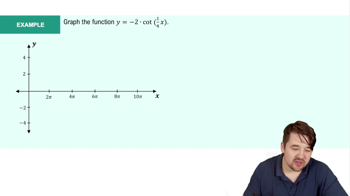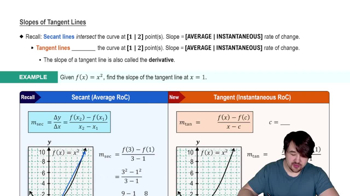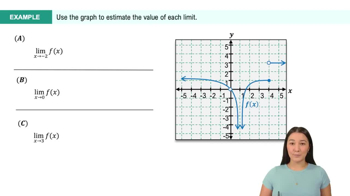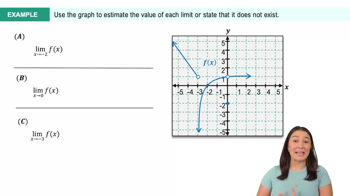Table of contents
- 0. Functions7h 52m
- Introduction to Functions16m
- Piecewise Functions10m
- Properties of Functions9m
- Common Functions1h 8m
- Transformations5m
- Combining Functions27m
- Exponent rules32m
- Exponential Functions28m
- Logarithmic Functions24m
- Properties of Logarithms34m
- Exponential & Logarithmic Equations35m
- Introduction to Trigonometric Functions38m
- Graphs of Trigonometric Functions44m
- Trigonometric Identities47m
- Inverse Trigonometric Functions48m
- 1. Limits and Continuity2h 2m
- 2. Intro to Derivatives1h 33m
- 3. Techniques of Differentiation3h 18m
- 4. Applications of Derivatives2h 38m
- 5. Graphical Applications of Derivatives6h 2m
- 6. Derivatives of Inverse, Exponential, & Logarithmic Functions2h 37m
- 7. Antiderivatives & Indefinite Integrals1h 26m
- 8. Definite Integrals4h 44m
- 9. Graphical Applications of Integrals2h 27m
- 10. Physics Applications of Integrals 2h 22m
1. Limits and Continuity
Introduction to Limits
Problem 2.4.63
Textbook Question
Use analytical methods and/or a graphing utility to identify the vertical asymptotes (if any) of the following functions.
g(θ)=tan πθ/10
 Verified step by step guidance
Verified step by step guidance1
Step 1: Recognize that the function g(θ) = tan(πθ/10) is a tangent function, which has vertical asymptotes where its argument is an odd multiple of π/2.
Step 2: Set the argument of the tangent function equal to (2n+1)π/2, where n is an integer, to find the vertical asymptotes: πθ/10 = (2n+1)π/2.
Step 3: Solve the equation from Step 2 for θ by multiplying both sides by 10/π to isolate θ: θ = (2n+1) * 5.
Step 4: Simplify the expression for θ to find the general form of the vertical asymptotes: θ = 5(2n+1).
Step 5: Conclude that the vertical asymptotes occur at θ = 5, 15, 25, ..., for n = 0, 1, 2, ..., and at θ = -5, -15, -25, ..., for n = -1, -2, -3, ..., indicating the positions of the vertical asymptotes.
 Verified video answer for a similar problem:
Verified video answer for a similar problem:This video solution was recommended by our tutors as helpful for the problem above
Video duration:
2mPlay a video:
Was this helpful?
Key Concepts
Here are the essential concepts you must grasp in order to answer the question correctly.
Vertical Asymptotes
Vertical asymptotes occur in a function when the output approaches infinity as the input approaches a certain value. This typically happens at points where the function is undefined, such as where the denominator of a rational function equals zero. For trigonometric functions like tangent, vertical asymptotes can also occur at specific angles where the function is undefined.
Recommended video:

Introduction to Cotangent Graph Example 1
Tangent Function
The tangent function, denoted as tan(θ), is a periodic function defined as the ratio of the sine and cosine functions: tan(θ) = sin(θ)/cos(θ). It has a period of π, meaning it repeats its values every π radians. The function is undefined wherever the cosine function equals zero, which leads to vertical asymptotes in its graph.
Recommended video:

Slopes of Tangent Lines
Graphing Utility
A graphing utility is a software tool or calculator that allows users to visualize mathematical functions and their properties. By plotting functions, users can easily identify key features such as intercepts, asymptotes, and behavior at infinity. For functions like g(θ) = tan(πθ/10), a graphing utility can help quickly locate vertical asymptotes by showing where the function approaches infinity.
Recommended video:

Graphing The Derivative

 6:47m
6:47mWatch next
Master Finding Limits Numerically and Graphically with a bite sized video explanation from Callie
Start learning





